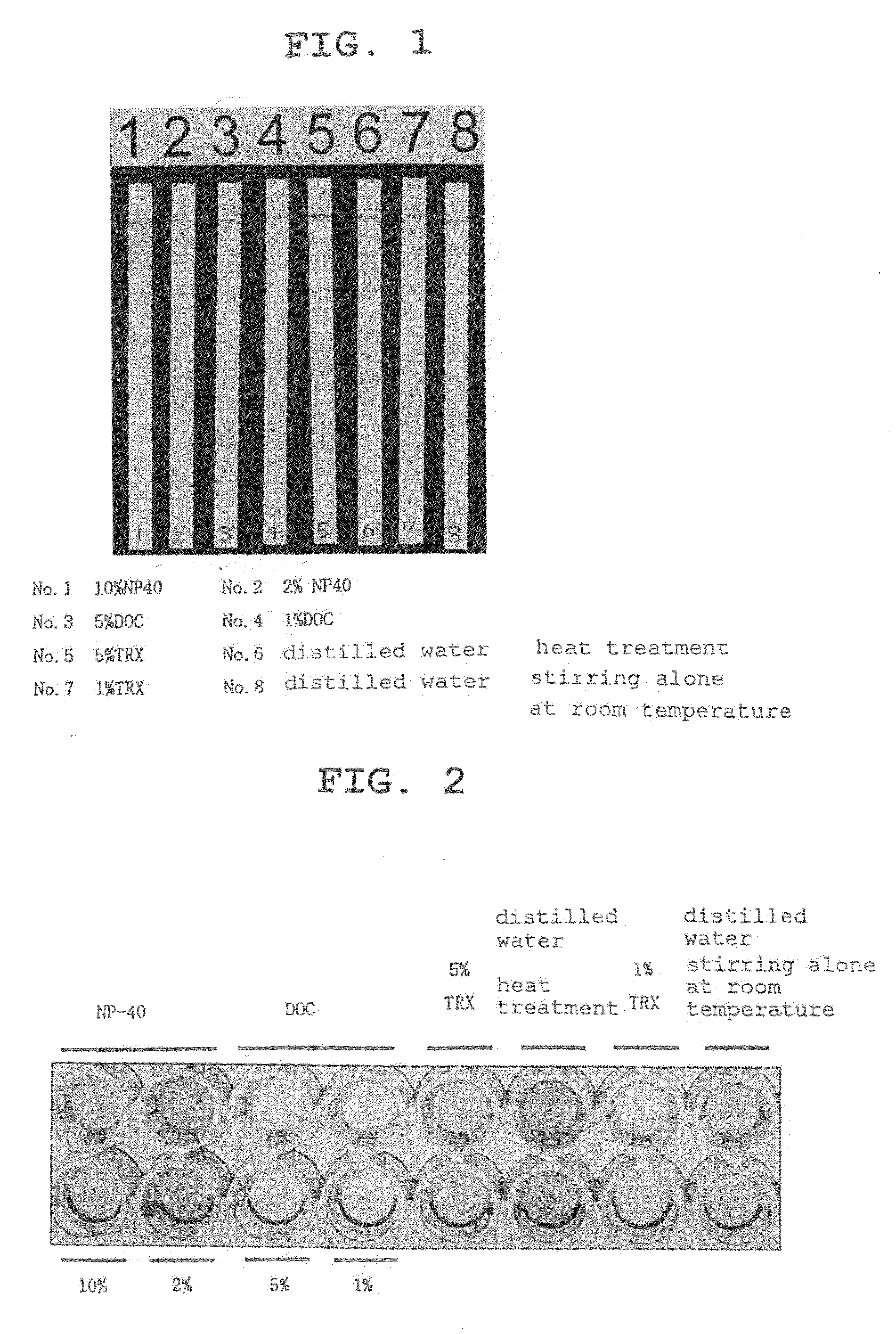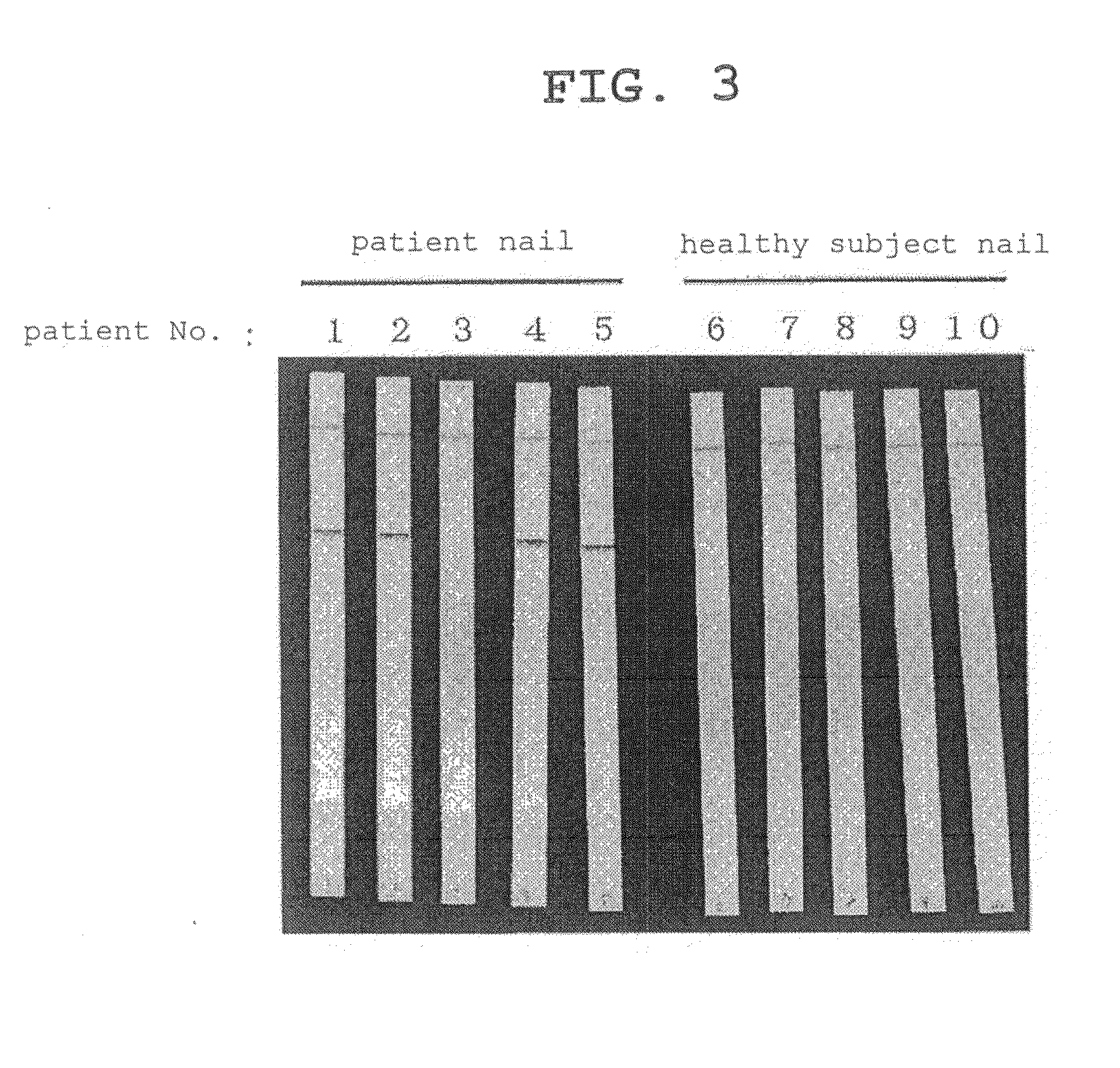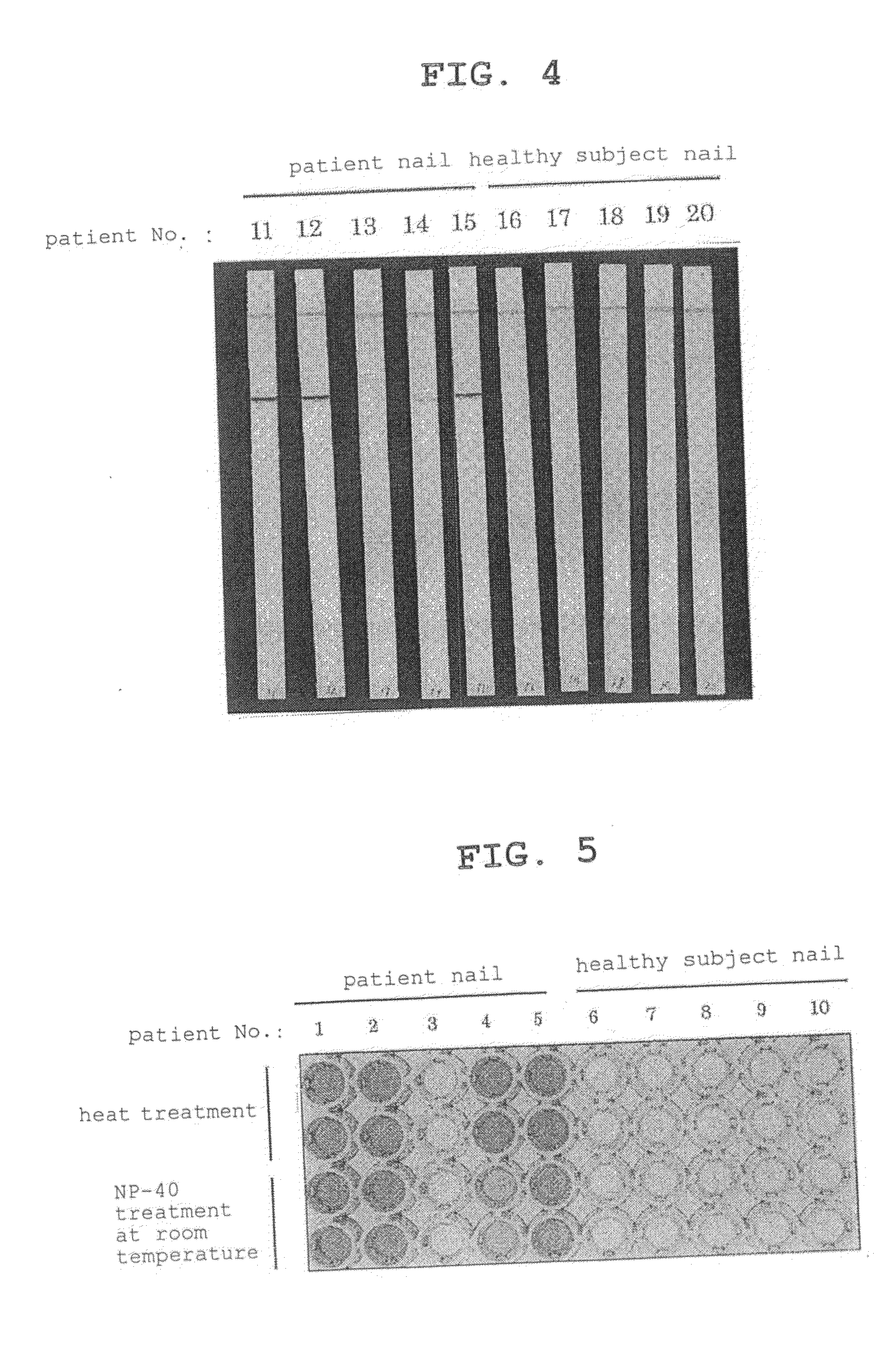Non-Heating Detection Method for Dermatophyte
- Summary
- Abstract
- Description
- Claims
- Application Information
AI Technical Summary
Benefits of technology
Problems solved by technology
Method used
Image
Examples
example 1
Preparation of Sample
[0073]As the surfactants, sodium deoxycholate (hereinafter DOC), which is an anionic surfactant, and NP-40 (polyoxyethylene nonylphenyl ether) and TNX (polyoxyethylene iso-octylphenyl ether), which are non-ionic surfactants, were used.
[0074]5 wt % and 1 wt % aqueous solutions were prepared for DOC, 10 wt % and 2 wt % aqueous solutions were prepared for NP-40, and 5 wt % and 1 wt % aqueous solutions were prepared for TNX. A nail from a tinea unguium patient definitively diagnosed by the KOH method was divided into 8 almost equivalent amounts. Six out of 8 nails were each placed in an aqueous surfactant solution (300 μl), and the mixture was stirred at room temperature (about 20° C.) for 20 min. As one control, one nail was placed in 300 μl of distilled water, and the mixture was stirred at room temperature (about 20° C.) for 20 min. For the other control, one nail was placed in 300 μl of distilled water, and the mixture was subjected to a heat treatment by placin...
example 2
Detection of Tinea Fungi by Tinea Fungi Diagnosis Strip Test
[0075]From the samples after each treatment, 120 μl was applied to a test piece for a tinea fungi diagnosis strip test produced using the 0014 antibody. The specific method is as follows.
1) Production of Antibody Solid-Phased Support
[0076]To produce an antibody solid-phased support on which the 0014 antibody has been linearly solid-phased, a nitrocellulose sheet (Millipore, HiFlow Plus) was cut into 5 mm×20 mm, and the 0014 antibody solution was applied to the sheet at 10 mm from the lower end with BioJet Q3000 (Biodot), and dried at room temperature for 2 hr.
2) Preparation of Colloidal Gold Particle-Labeled-Material Holding Carrier
[0077]a. Colloidal Gold Particle-Labeled 0014 Antibody
[0078]To a dispersion (100 mL) of colloidal gold having a particle size of 40 nm, which was adjusted to pH6.0 with 0.1% K2CO3 solution was added a monoclonal antibody 0014 solution (400 μg), and the mixture was admixed at room temperature. The...
example 3
Detection of Antigen by ELISA
[0082]A treatment liquid sample similar to that prepared in Example 1 was measured by ELISA. The method was as follows.
1) solid phasing of antibody: The 0014 antibody was diluted with 50 mM carbonate buffer (pH 9.6) to a concentration of 20 μg / ml, dispensed to each well of a 96 well microplate (#9018, Corning Incorporated) by 50 μl, and incubated overnight at 4° C.
2) blocking: An aqueous Yukijirushi BlockAce 25% solution was prepared, dispensed by 300 μl, and incubated at room temperature for 1 hr.
3) washing: PBS containing 0.05% Tween 20 (Nacalai Tesque) was dispensed by 300 μl, and washed by repeating stirring and discarding 3 times.
4) antigen-antibody reaction with sample: A sample was added to each well by 50 μl, and the mixture was incubate at room temperature for 1 hr.
5) The washing operation similar to the above-mentioned 3) was performed 3 times.
6) A biotinylated 0014 antibody was diluted to 1 μg / ml with 10% aqueous BlockAce solution, dispensed t...
PUM
 Login to View More
Login to View More Abstract
Description
Claims
Application Information
 Login to View More
Login to View More - R&D
- Intellectual Property
- Life Sciences
- Materials
- Tech Scout
- Unparalleled Data Quality
- Higher Quality Content
- 60% Fewer Hallucinations
Browse by: Latest US Patents, China's latest patents, Technical Efficacy Thesaurus, Application Domain, Technology Topic, Popular Technical Reports.
© 2025 PatSnap. All rights reserved.Legal|Privacy policy|Modern Slavery Act Transparency Statement|Sitemap|About US| Contact US: help@patsnap.com



